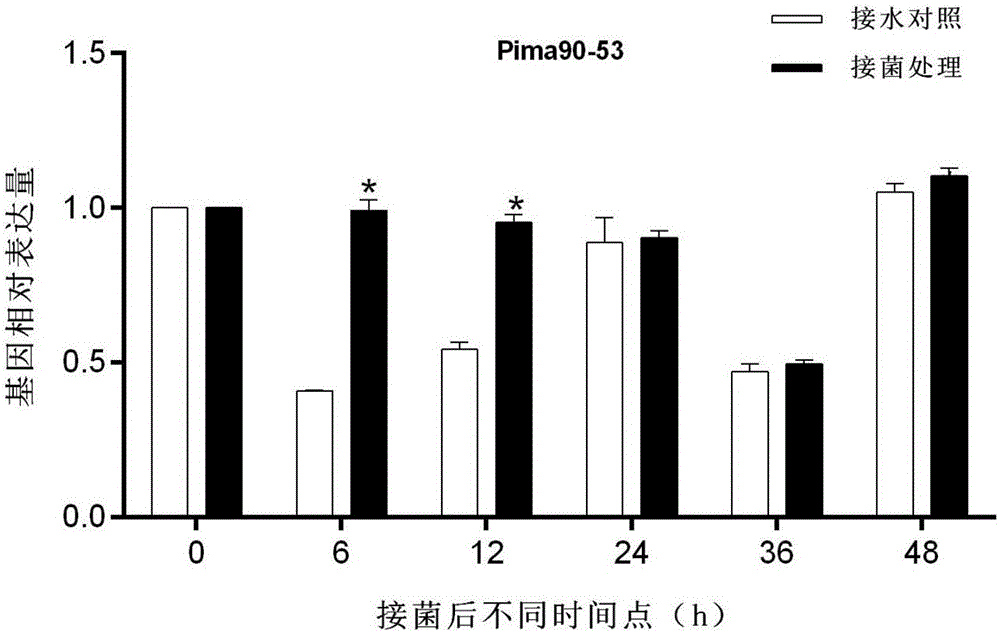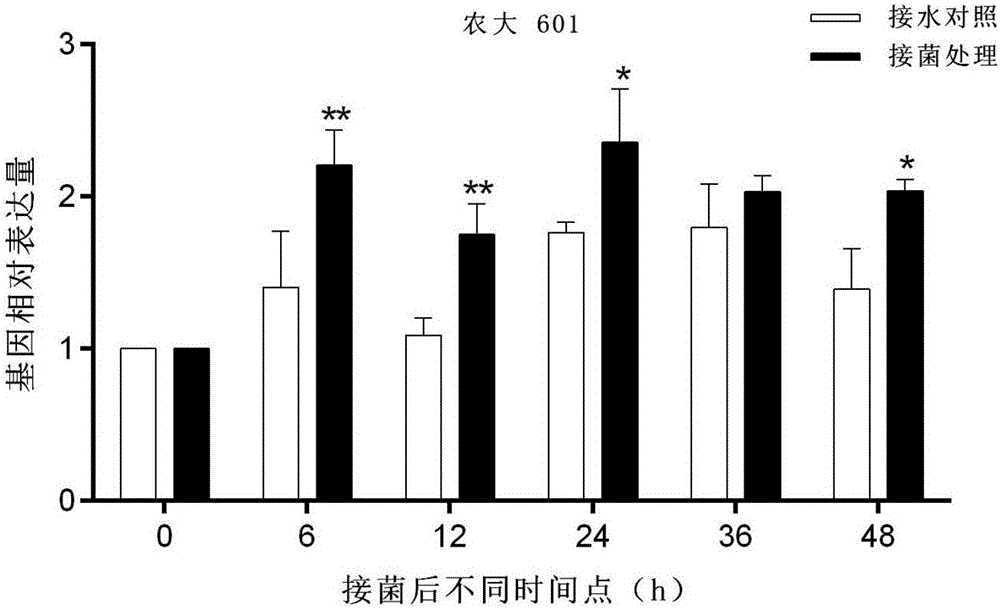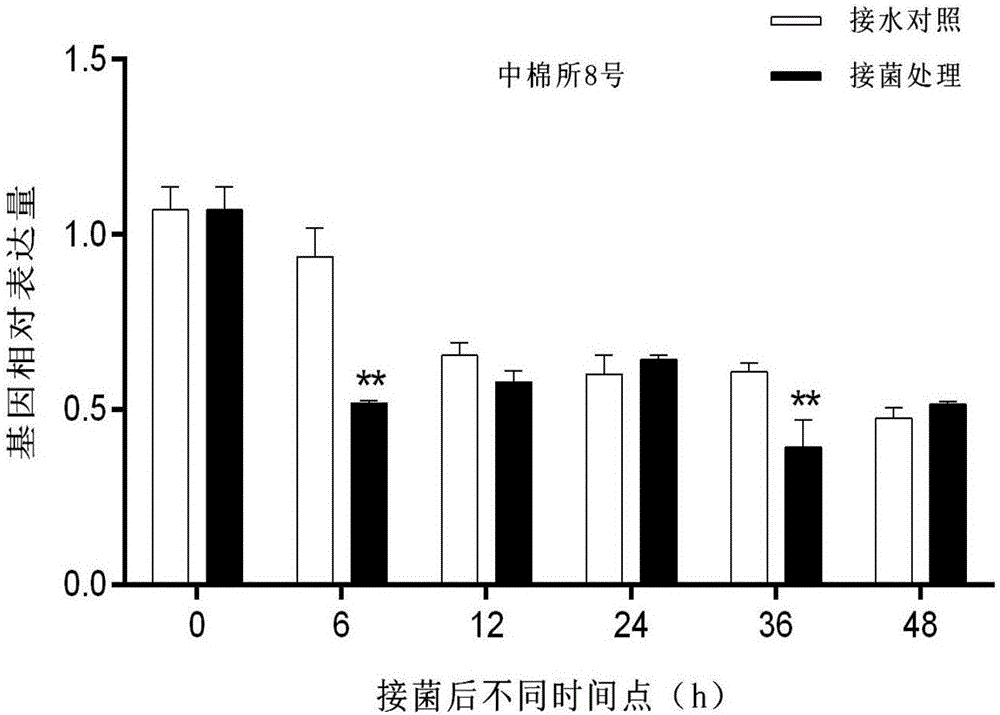Cotton ascorbic acid peroxidase gene APX and application thereof
A technology of peroxidase and ascorbic acid, applied in the fields of plant molecular biology and genetic engineering, can solve the problems of limited research on the function of APX gene
- Summary
- Abstract
- Description
- Claims
- Application Information
AI Technical Summary
Problems solved by technology
Method used
Image
Examples
Embodiment 1
[0035] Example 1 Cloning and expression pattern analysis of cotton ascorbate peroxidase gene APX gene
[0036] 1. Planting of cotton seedlings: develvet the seeds of sea island cotton Pima 90-53, Zhongmiansuo No. 8 and Nongda 601 with concentrated sulfuric acid, soak them in water to absorb water to accelerate germination, and transfer them to vermiculite soaked in nutrient solution after the roots grow to 1 cm. After one week of growth, the cotyledons of the plants were unfolded, and the plants with the same growth were selected respectively, and three plants were used as a group, and three biological replicates were taken. The roots, stems, and leaves were sampled separately, and frozen in liquid nitrogen. In an RNase-free environment, use a high-temperature and high-pressure sterilized mortar and pestle to fully grind, store in an ultra-low temperature refrigerator, and set aside.
[0037] 2. Extraction and reverse transcription of total RNA. Use the EasySpin Plant RNA Extr...
Embodiment 2
[0062] Example 2 Using VIGS technology to negatively verify APX gene function
[0063] 1. Construction of VIGS vector PYL156-APX
[0064] Select the enzyme cutting sites Xba I and BamH I, and carry out double enzyme digestion on the pYL156 vector plasmid and the pMD19-APX intermediate recombinant plasmid. The enzyme digestion reaction is: 10×Fast Buffer 2 μL, plasmid DNA 1 μg, Xba I 1 μL, BamH I 1 μL , ddH 2 O to make up to 20 μL. The digested products were ligated and transformed into Escherichia coli, positive clones were detected by PCR and plasmid digestion, and sent for sequencing. The bacterial liquid determined by sequencing was shaken, and the plasmid was extracted and transformed into Agrobacterium GV3101.
[0065] 2. Cotton seedling planting and bacterial injection
[0066] (1) Wash the Nongda 601 cotton seeds, add water and place them on a horizontal shaker, wait for germination, and change the water frequently during the period.
[0067] (2) Scatter the lubai ...
Embodiment 3
[0079] Example 3 Positive verification of the function of APX gene transformed tobacco
[0080] 1. Construction of eukaryotic expression vector
[0081] Select the restriction sites of the overexpression vector PC6 as BamH I and Kpn I and use Primer 5.0 to design primers (Tm: 58°C) as follows:
[0082] F(5'-3'): GGATCCATGACCAAGTGTTACCC
[0083] R(5'-3'): GGTACCTTATGCATCAGCAAATCC
[0084] Carry out PCR amplification, PCR reaction system: 2×Phanta Master mix 25 μL, primer F (10U / μL) 2 μL, primer R (10U / μL) 2 μL, APX plasmid 5 μL, ddH 2 O to make up to 50 μL. The PCR reaction program was 94°C for 5min, 94°C for 30s, 54°C for 30s, 72°C for 1min, a total of 35 cycles, 72°C for 10min, and 4°C for incubation.
[0085] The PCR product gel was recovered and transformed into Escherichia coli and sent for sequencing, and the correct sequence was extracted from the plasmid, and then the target gene plasmid with the restriction site and the empty vector plasmid were digested and ligate...
PUM
 Login to View More
Login to View More Abstract
Description
Claims
Application Information
 Login to View More
Login to View More - R&D
- Intellectual Property
- Life Sciences
- Materials
- Tech Scout
- Unparalleled Data Quality
- Higher Quality Content
- 60% Fewer Hallucinations
Browse by: Latest US Patents, China's latest patents, Technical Efficacy Thesaurus, Application Domain, Technology Topic, Popular Technical Reports.
© 2025 PatSnap. All rights reserved.Legal|Privacy policy|Modern Slavery Act Transparency Statement|Sitemap|About US| Contact US: help@patsnap.com



